Crunchy, buttery toffee topped with a blanket of chocolate and a dusting of almond meal, this is English Toffee at its best. It's gluten-free and easy to make, using just 7 ingredients. Perfect for the holidays, Valentine's Day, Passover, or just for a treat!
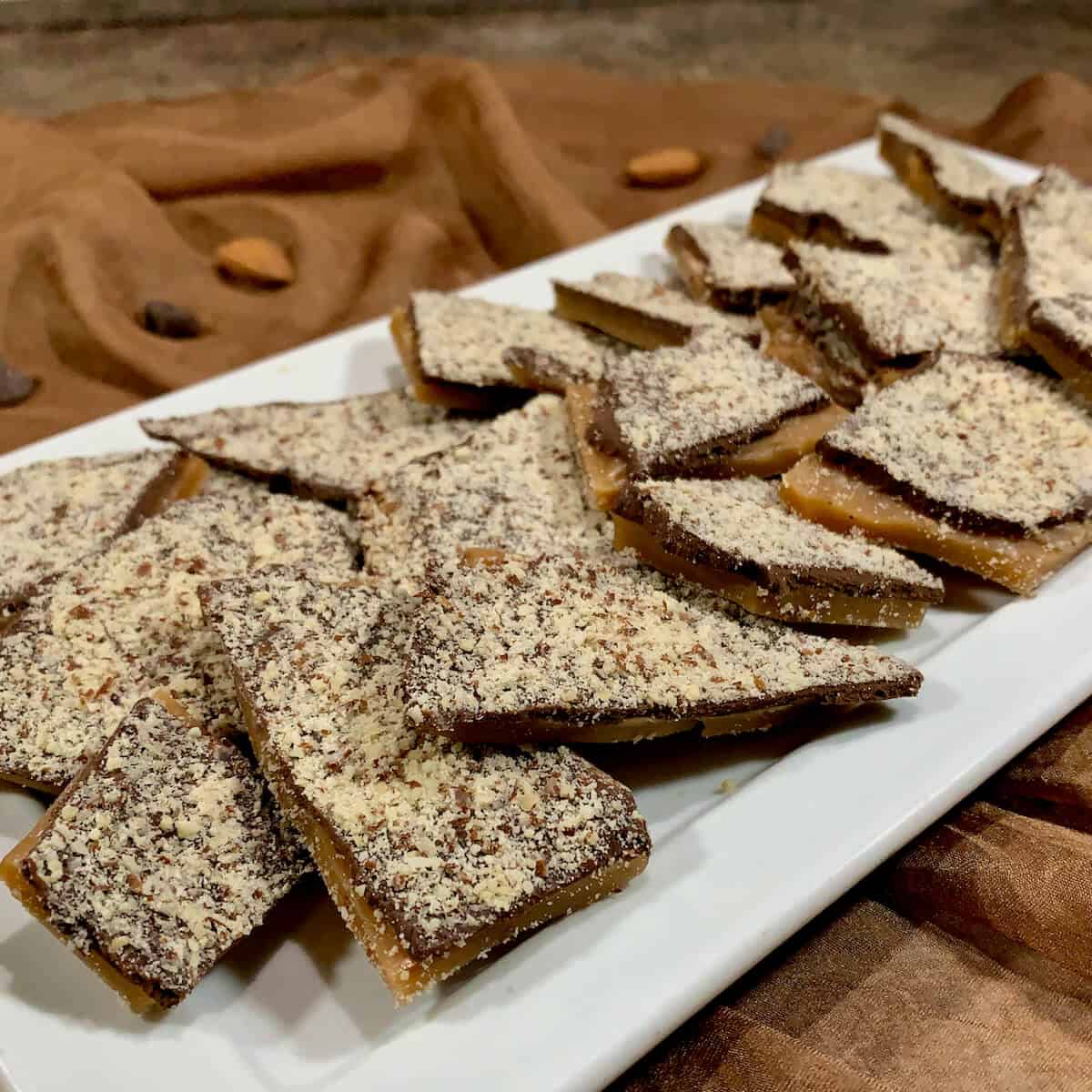
Jump to:
Why this recipe works
- English Toffee looks difficult, but is actually quite simple with a bit of time and attentiveness
- Make the toffee with or without nuts, at your preference
- Top the toffee with almond meal, chopped almonds, or another nut of choice
Good English Toffee is one of life's indulgences. Crunchy, buttery, with a blanket of chocolate and a dusting of almond meal, this is a candy worth its name.
(Hang on, that's not my idea of toffee!)
Well, I'm not surprised. English toffee recipes vary by which side of the Pond you're on, or even the region you're in (see the FAQs below for the specifics). My English toffee recipe combines features of both the UK and US versions to create something delicious that my family loves.
This crunchy toffee features a buttery caramel flavor complemented by creamy chocolate. The almond meal adds a nice earthy counterpoint to keep the candy from being cloying.
English Toffee is naturally gluten-free, making it perfect for those wanting a sweet treat when baked goods are out of reach (Passover comes to mind). It's also rich and indulgent, a perfect thing to share with your special someone on Valentine's Day.
It's also festive and impressive, so it makes a great gift that ships well. Christmas, Hanukkah, Kwanzaa, Hogmanay, or any other holiday will be that much more special if you make a batch of English Toffee.
One last warning...this yummy English Toffee is addictive. I'll reach for a piece when I want a small bite of something sweet. The harder part is restraining myself from taking more!
Well, it is an indulgence.
⭐⭐⭐⭐⭐
Our family was loving it from the first bite to the last! What an amazing treat!
- Dina
Recipe Ingredients
You'll need the following ingredients to make this English toffee recipe:
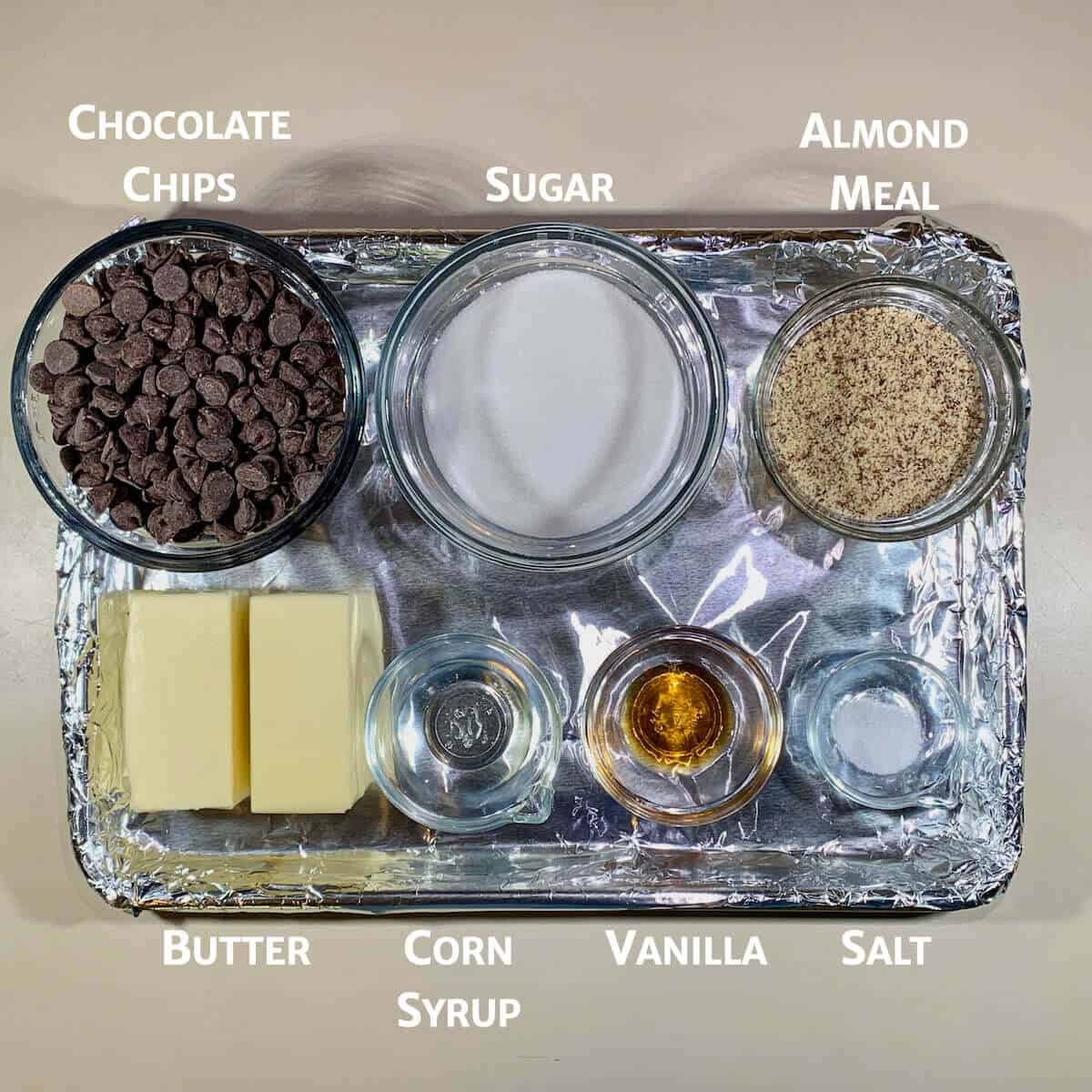
Ingredient Notes
Butter: As one of the main ingredients, it's best to use the highest quality butter. European butters, with higher levels of butterfat, will produce the richest flavor.
Chocolate: While I use semisweet chocolate chips, you can use dark chocolate or milk chocolate.
Almonds: I use finely ground almonds (almond meal) to top the toffee. Using almond meal instead of chopped almonds further lets the toffee itself shine. For a crunchier nut topping, replace the almond meal with ¼ cup toasted chopped almonds. You can also use chopped pecans, cashews, macadamia nuts, or walnuts, whatever you prefer.
My recipe for English toffee doesn't include nuts in the candy itself. Some recipes call for putting 1 cup of whole toasted almonds on the baking pan before adding the toffee. It's a personal preference of course, but I'd focus on the toffee this time (no judgements!).
Corn Syrup: The presence of corn syrup is here to stabilize the sugar so it cooks properly and doesn't crystallize, like when we're making Caramel Sauce. It isn't strictly necessary, but I'd rather be successful than sorry.
See the recipe card for a full list of ingredients and measurements.
How to make English Toffee
Step 1: Make the toffee
Line a quarter sheet baking pan (preferably 9- x 13-inches) with foil and grease with canola oil spray or butter. Set aside while you make the toffee.
Combine the butter, sugar, corn syrup, vanilla, and salt (photo 1). Cook over medium heat until the butter is melted and the sugar has dissolved, stirring constantly. The mixture will be bubbling by this point. Use a good heavy-bottomed saucepan to avoid having your toffee burn.
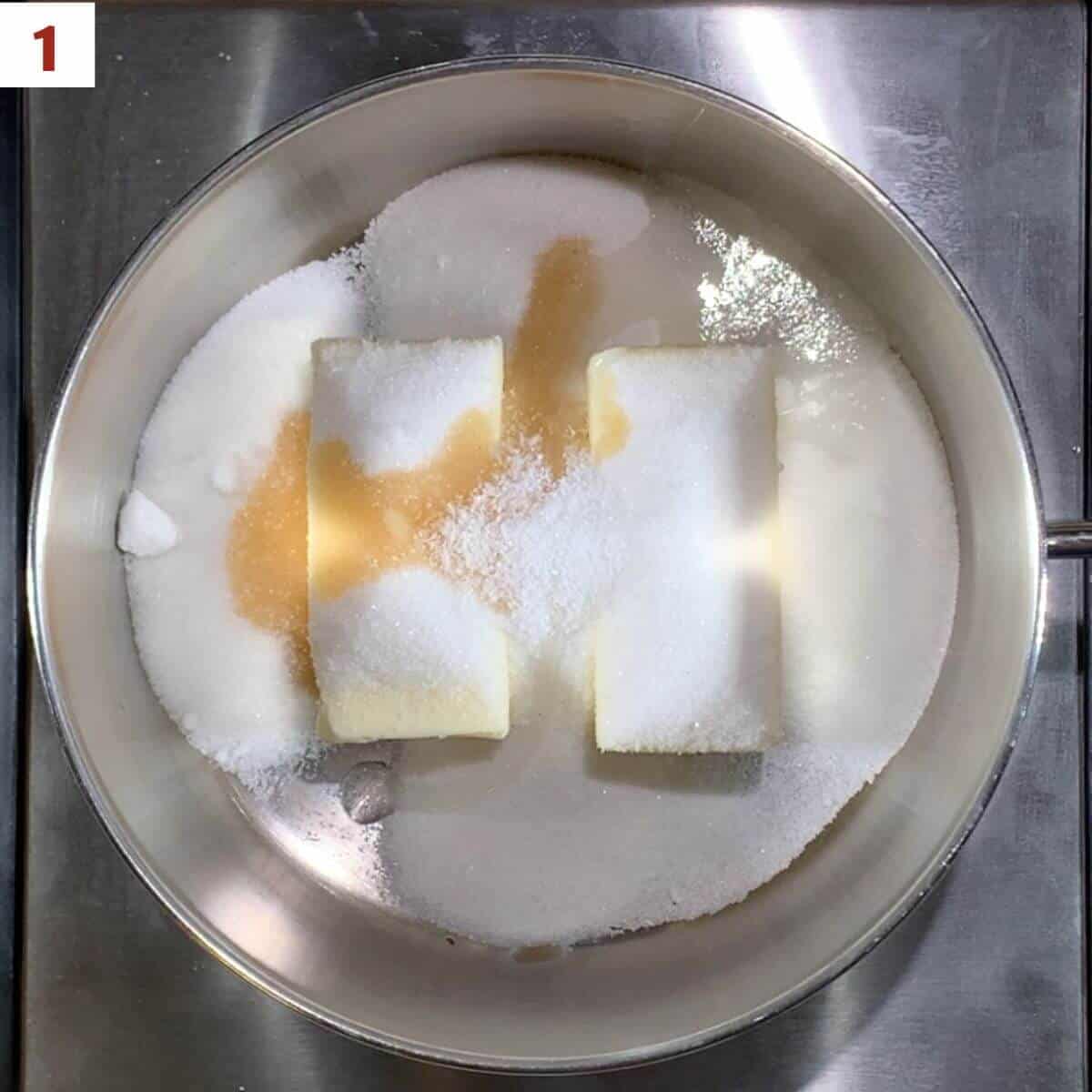
When everything is melted, increase the heat to medium-high and cook while continuously stirring until the mixture reaches 300°F (hard-crack stage), about 9 to 15 minutes (photo 2). The toffee will be golden-brown, but it's best to check with a digital thermometer or a candy thermometer.
If the candy appears to separate (with a layer of melted butter on top) stir vigorously to make it come back together again.
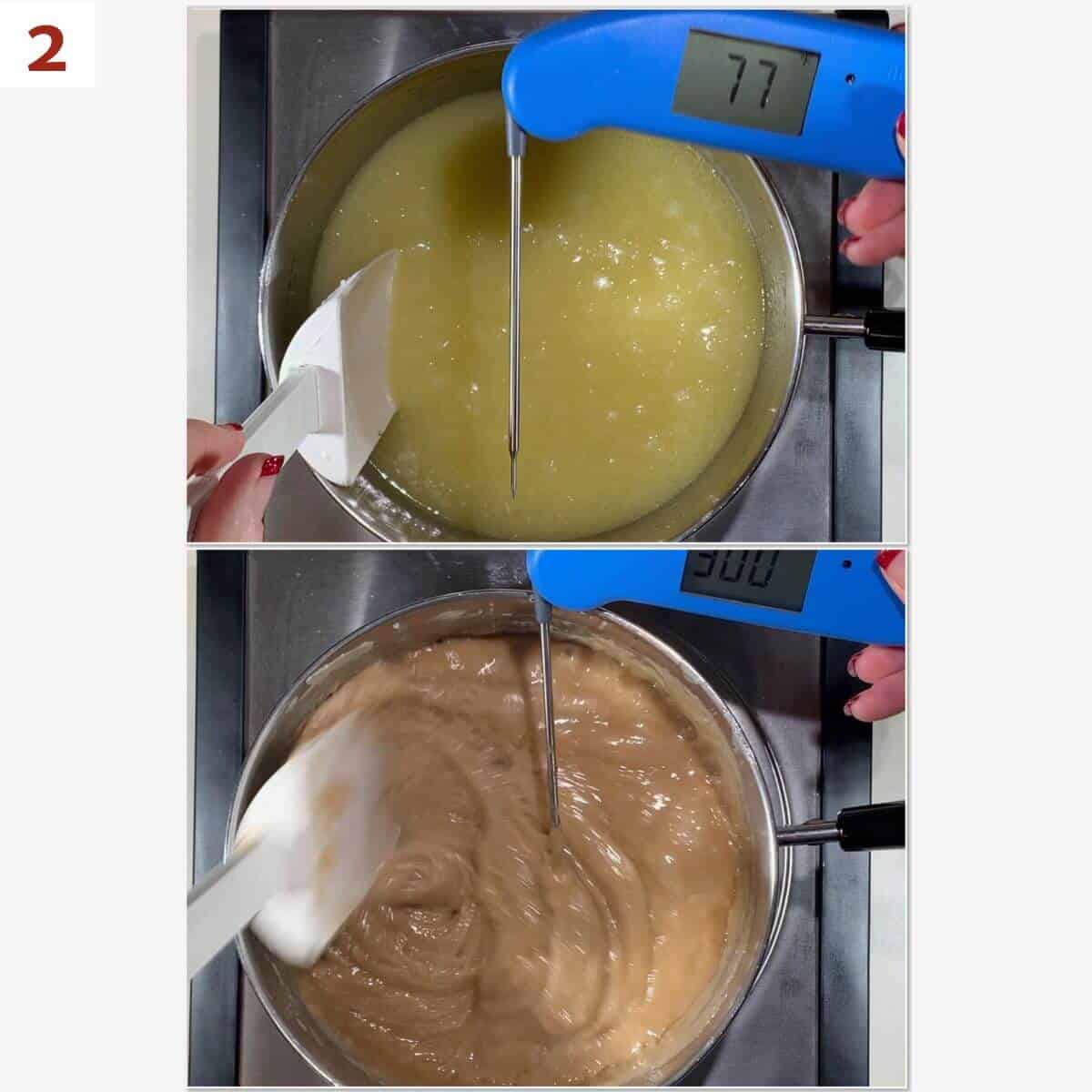
Once the toffee has come to temperature, immediately pour it onto the prepared pan (photo 3). Use a large offset spatula to spread it out evenly as soon as possible. You don't need to go to the edges of the pan, although you can. Allow to cool for 2 to 3 minutes. Work quickly, but carefully - that sugar syrup is hot!
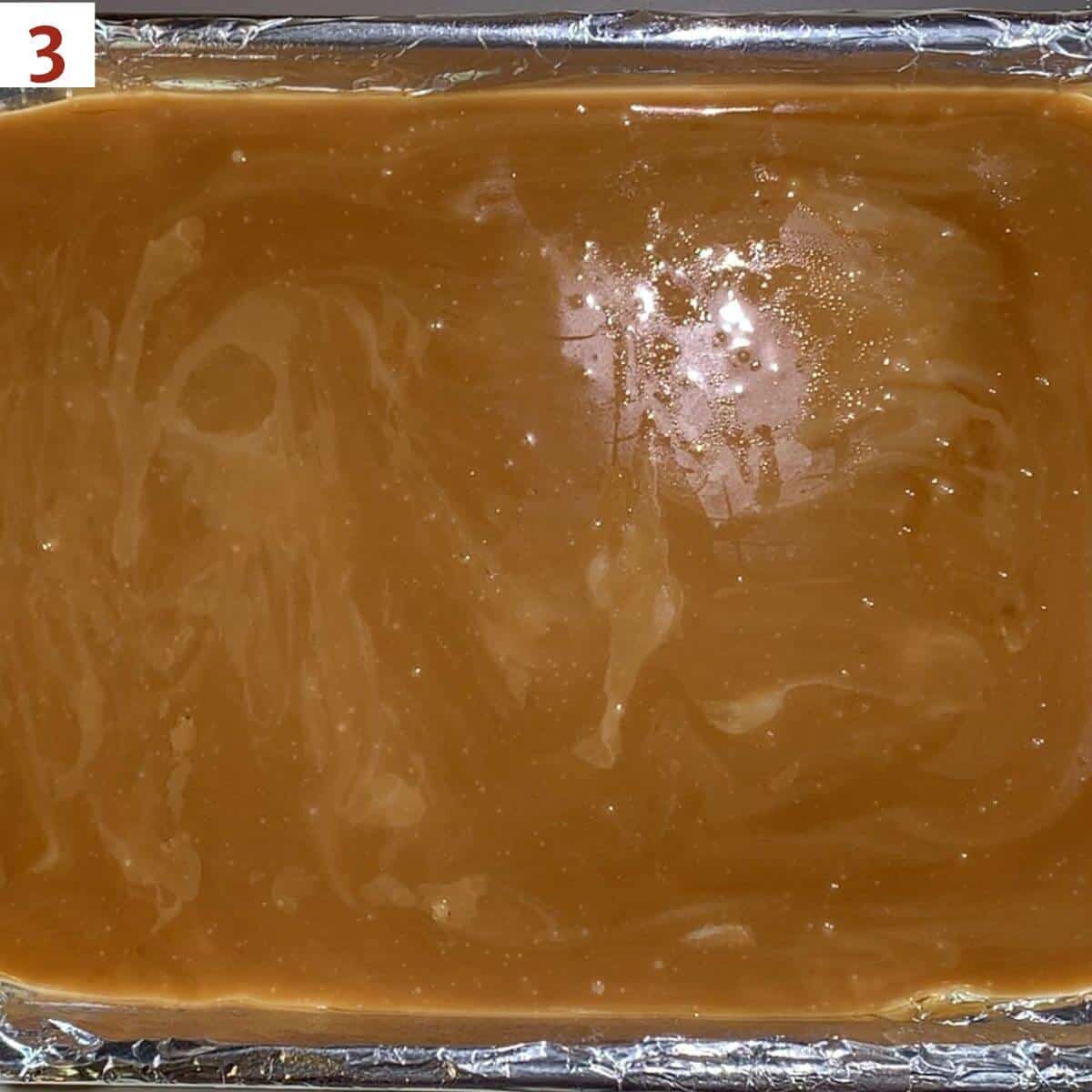
Step 2: Assemble the toffee
Sprinkle the chocolate chips over the surface of the hot toffee, and let sit for 5 minutes or until the chocolate appears glossy (photo 4). If the toffee has cooled too much, popping the toffee with the chocolate into a low oven (say 200°F) for about five minutes will help melt the chocolate enough to be spreadable.
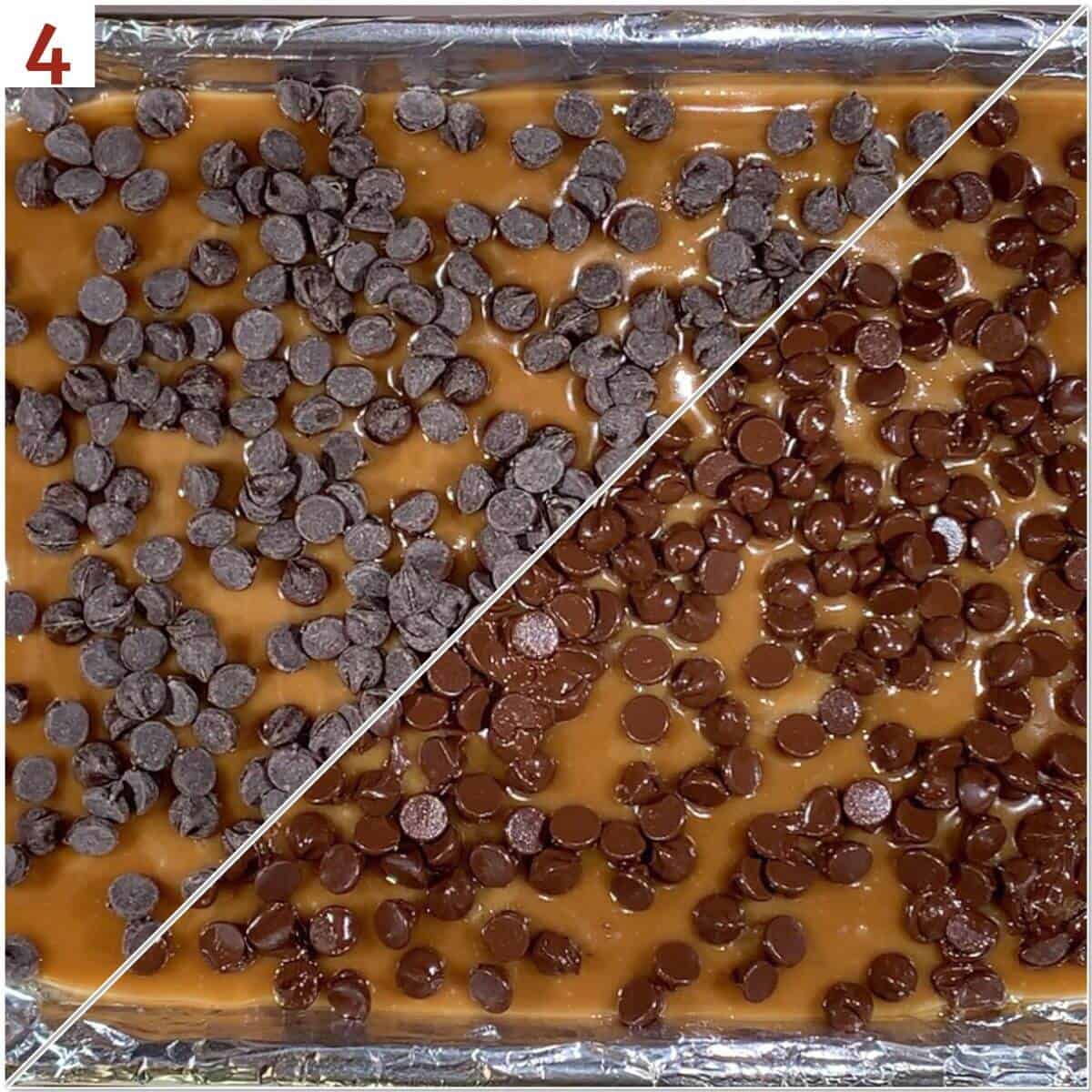
Spread the melted chocolate evenly over the surface. Dust the top of the melted chocolate with the almond meal or toasted chopped almonds, if you're so inclined (photo 5).

Step 3: Break up the toffee
Now comes the hardest part of all, waiting one to two hours for the toffee to be cool enough to break apart. Once the toffee is cool and the chocolate is set, start breaking the toffee into irregular shards with your hands or a butter knife (photo 6).
Yes, those small pieces are fair game to munch on while you work!
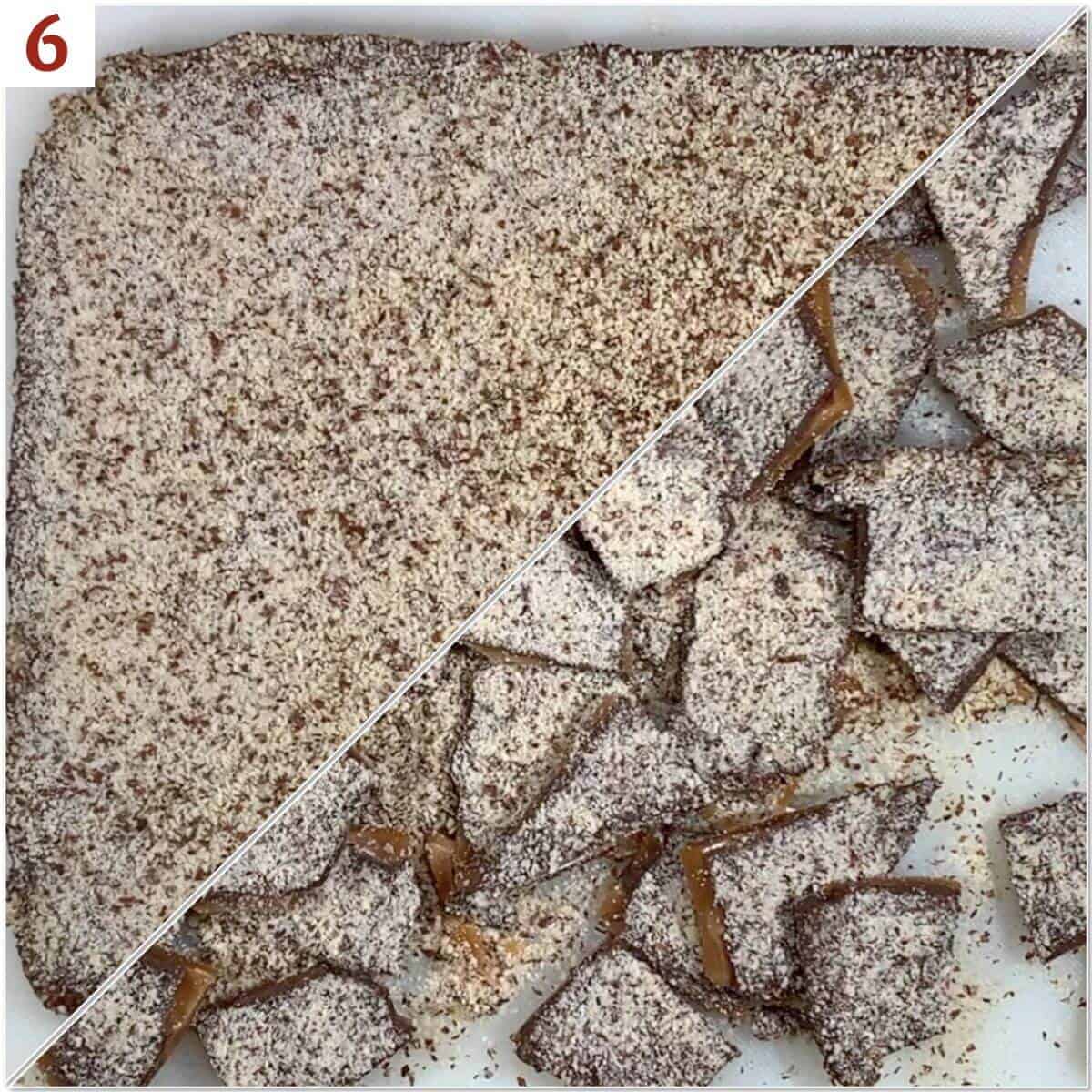
Storage instructions
Store the candy at room temperature in an airtight container for up to a week. In the refrigerator, the candy will last for a few weeks, and in the freezer, a few months.
Yield Notes
This recipe makes about 1¼ pounds of toffee, with each piece weighing about ⅔ ounces (20 grams).
Tips for candymaking success
Be attentive while you're making the candy
While you're cooking the sugar and butter, stir, stir, STIR, then stir some more. This serves two purposes, to keep the sugar from burning and to keep you aware of when to stop cooking.
The mixture's temperature rises quickly at first, but slows at the end lulling the inattentive chef into a false sense of timing.
The candy temperature matters
English Toffee recipes use different target temperatures, from as low as 295°F (soft-crack stage) to 310°F (hard-crack stage).
Remember, the higher the temperature, the more brittle your candy will be. Choose wisely. If you're wondering about the different candy making stages, check the definitions on this Pecan Pralines recipe.
If the butter separates from the toffee...
During cooking, a common problem is that the candy appears to separate (with a layer of melted butter on top). The best way to combat this is to stir vigorously to make it come back together again.
Why this can happen can be for a few reasons. Here are some tips to try:
- Keep the heat consistent throughout the cooking process. You want the sugar and butter to cook at the same rate, so don't rush it.
- Stir the mixture consistently, but not too fast. Take it easy.
- Use a spoon that is temperature neutral (like a wooden or silicone spoon) so there's no temperature shock.
- Use a heavy-bottomed pan so there's no hot spots.
Lastly, when you go to pour out the toffee, make sure it's spread thinly - the thicker the toffee layer, the longer it takes to cool, and the more likely you'll see separation.

Questions asked and answered
Here are some questions you might have...
Mainly, British cooks make a brown sugar toffee, resulting in a more pronounced molasses flavor. Americans cooks generally use white granulated sugar in their toffee recipe which gives the butter a more prominent role.
Nuts are also featured more prominently in American English Toffee. Some recipes call for nuts (most often almonds) to be included in the toffee itself, while others use nuts just as a topping.
The consistency of the finished toffee depends on the proportion of sugar to butter and the temperature to which the mixture is heated. The higher the temperature, the harder the toffee will be. The texture can range from soft and sticky (like taffy) to hard and brittle (aka buttercrunch toffee).
Experienced candy makers can tell by the toffee's golden-brown color if it's ready, from a light tan (like raw almonds) to light golden brown (think peanut butter) to know when to pull it off the heat.
You can use the cold water test: when the candy gets to the right color, use a clean spoon to drop a bit of the mixture into a bowl of cold water. If the mixture hardens immediately, it is at the right candy stage for toffee.
For more precision, use a digital thermometer (or a candy thermometer clipped to the side of the pan) to make sure the candy reaches hard-crack stage (at least 300°F).
If the leftover toffee has hardened in the pot, add enough water to cover it and and bring it to a boil. The boiling water will melt the remaining caramel, and you can then wash it away.


More fudge and candy recipes to try
Recipe

Buttery English Toffee Candy (Gluten-Free)
Ingredients
For the toffee
- 1 cup unsalted butter
- 1 cup granulated sugar
- 1 tablespoon light corn syrup
- 1 teaspoon pure vanilla extract
- ¼ teaspoon kosher salt
For the topping
- 12 ounces chocolate chips, semisweet, dark, or milk (2 cups)
- ¼ cup almond meal, see Recipe Notes
Instructions
- Line a quarter sheet baking pan (preferably 9- x 13-inches) with foil and grease with canola oil spray or butter.
- Make the toffee: In a 2-quart heavy bottomed saucepan, combine the butter, sugar, corn syrup, vanilla, and salt. Cook over medium heat until the butter is melted and the sugar has dissolved, stirring constantly. The mixture will be bubbling by this point.
- When everything is melted, increase the heat to medium-high and cook while continuously stirring until the mixture reaches 300 °F (hard-crack stage), about 9 to 15 minutes. The toffee will be golden-brown, but it's best to check with a digital thermometer. If the candy appears to separate (with a layer of melted butter on top) stir vigorously to make it come back together again.
- Once the toffee has come to temperature, immediately pour it onto the prepared pan. Use a large offset spatula to spread it out evenly as soon as possible. You don't need to go to the edges of the pan, although you can. Allow to cool for 2 to 3 minutes.
- Add the toppings: Sprinkle the chocolate chips over the surface of the hot toffee and let sit for 5 minutes or until the chocolate appears glossy. If the toffee has cooled too much, popping the toffee with the chocolate into a low oven (say 200 °F) for about five minutes will help melt the chocolate enough to be spreadable.
- Spread the melted chocolate evenly over the surface with the same large offset spatula. Dust the top of the melted chocolate with the almond meal.
- Allow the toffee to cool completely in the pan, about 1 to 2 hours.
- Once the toffee is cool and the chocolate is set, start breaking the toffee into irregular shards with your hands or a butter knife.
- Storage instructions: Store the candy at room temperature in an airtight container for up to a week. In the refrigerator, the candy will last for a few weeks, and in the freezer, a few months.
- This recipe makes about 1¼ pounds of toffee, with each piece weighing about ⅔ ounces (20 grams).




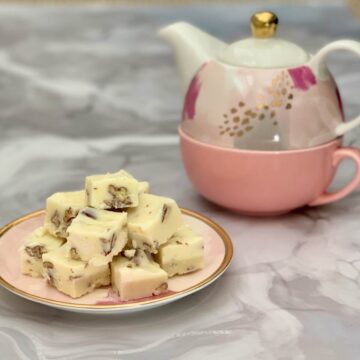

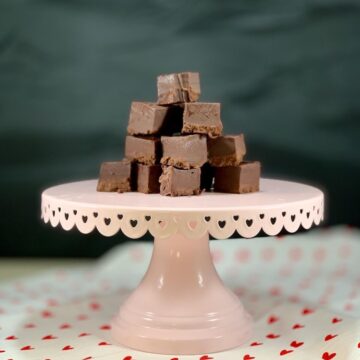

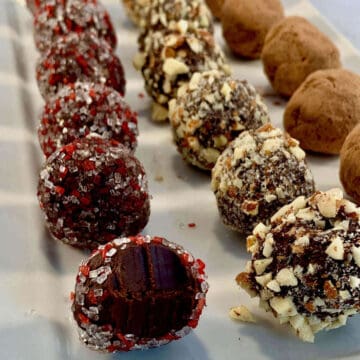
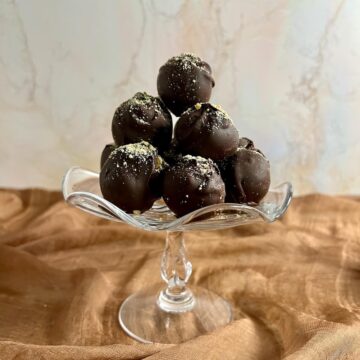


Heather says
I made this last night for my husband for Valentine’s Day. I just broke it into pieces and put it in a jar. I may have tried a couple little pieces lol. It is sooo good! He is going to love it! Thanks for a great recipe!
Tammy Spencer says
Hi Heather, I’d try a piece or two, just for quality control purposes of course! Enjoy, and thanks for sharing 🙂
Dina Reisman says
Our family was loving it from the first bite to the last! What an amazing treat!
Tammy Spencer says
So glad you enjoyed it! 🙂